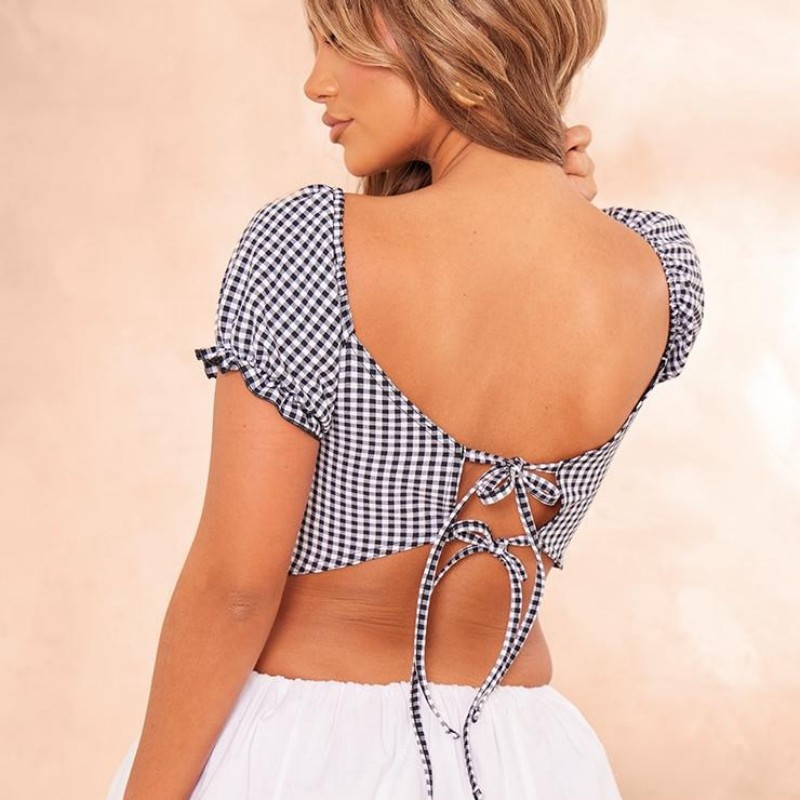Creating a custom t-shirt at home is a fantastic way to express your individuality, explore your creativity, and enjoy a sense of accomplishment. With the right materials and techniques, you can design a shirt that perfectly fits your style and captures your personality. Whether you want to make a simple graphic tee, a stylish crop top, or an artistic masterpiece, learning how to make a t-shirt at home opens the door to endless possibilities. This journey can be incredibly rewarding, allowing you to exercise your creativity, practice new skills, and potentially save money on store-bought apparel. In this comprehensive guide, we will explore the essential materials, tools, techniques, and step-by-step processes involved in making a t-shirt at home. We will cover various methods, from sewing and screen printing to tie-dye and fabric painting. By the end of this article, you’ll be well-equipped to embark on your t-shirt-making adventure, creating unique wearable art that you can proudly show off to friends and family.

Contents
Essential Materials and Tools
Before diving into the process of how to make a t-shirt at home, you’ll need to gather specific materials and tools. Being well-prepared can significantly streamline the crafting process and lead to better results.
Fabric of Choice
The first and most important material is the fabric itself. Common choices for t-shirts include:
- Cotton: This is the most popular option due to its softness, breathability, and comfort. Cotton fabric can be found in various weights, making it suitable for different styles.
- Blends: Cotton-polyester blends combine the comfort of cotton with the durability and wrinkle resistance of polyester. These fabrics often make for softer and stretchier shirts.
- Bamboo or Linen: For a more eco-friendly option, consider bamboo or linen fabrics. They are breathable and have a unique texture, though they may require different handling compared to cotton.
Pattern or Template
If you’re looking to create a specific style, having a pattern or template will make the process easier. You can either purchase a pattern from a craft store or create your own by tracing a t-shirt you already own.
Sewing Supplies
If you plan on sewing your t-shirt, you’ll need several sewing supplies:
- Sewing Machine: A good sewing machine will make the project easier and faster. If you don’t have one, hand sewing is also an option, though it will take longer.
- Thread: Choose thread that matches your fabric color. Cotton thread works well with cotton fabric.
- Scissors: A quality pair of fabric scissors will ensure accurate cuts.
- Measuring Tape: Accurate measurements are essential for achieving the right fit.
- Pins or Clips: These will help you hold fabric pieces together while working.
Printing and Design Materials
For those interested in creating printed designs, consider the following materials:
- Transfer Paper: This is useful for printing designs or images you want to transfer onto the fabric. Be sure to purchase the type that is compatible with your printer (inkjet or laser).
- Fabric Paint or Markers: Another option for adding designs directly to your shirt is fabric paint or markers. These are great for hand-drawn designs and can be easily applied in your desired style.
- Screen Printing Kit: If you’re interested in screen printing, invest in a basic screen printing kit that includes the screen, squeegee, and ink.
Accessories for Finishing Touches
Lastly, don’t forget about finishing touches that can elevate your t-shirt:
- Heat Press: If you’re using transfer paper, a heat press will give you more professional results compared to an iron.
- Embroidery Supplies: If you want to add embroidered designs, consider using embroidery thread and a needle. This adds a unique and personal touch to your t-shirt.
Designing Your T-Shirt
Now that you have gathered essential materials, the next step is to design your t-shirt. A well-thought-out design will set the foundation for a successful project.
Decide on a Style
Think about the t-shirt style you wish to create. Consider whether you want a classic fit, a cropped style, or a relaxed oversized look. Here are some common styles to consider:
- Classic Crew Neck: The most common style, which features a round neckline and short sleeves. It’s versatile and comfortable.
- V-Neck: This style has a V-shaped neckline, providing a slightly more fashionable and elongated look.
- Scoop Neck: Similar to a crew neck but with a wider and deeper neckline.
- Long Sleeve or Tank Top: Depending on the weather and occasion, choose long sleeves or a tank top design.
Create Your Design
Once you know the style you want, begin brainstorming ideas for your design. Consider the following approaches:
- Graphic Designs: These could be photos you love, logos, or artistic illustrations. You can use graphic design software or draw by hand, then scan the design for printing.
- Text-Based Designs: Create witty messages or meaningful quotes that resonate with your personality. Choose the font carefully to reflect the intended message.
- Patterns and Colors: Think about color schemes and patterns that appeal to you. Use contrasting or complementary colors for added visual interest.

Use a Mockup Tool
Before finalizing your design, consider using a mockup tool or software to visualize how your design will look on the t-shirt. This step helps you assess colors, placements, and overall aesthetics, ensuring you’re happy with your design before proceeding.
How to Cut Fabric for Your T-Shirt
Once you have your t-shirt style and design settled, it’s time to prepare the fabric for cutting. Accurate cutting will determine the success of your t-shirt-making efforts.
Measuring and Marking
- Lay Out the Fabric: Spread your fabric on a flat, clean surface. Ensure it’s wrinkle-free for accurate measurements.
- Use the Pattern: Align your pattern or template on the fabric. If you’re cutting without a pattern, measure the dimensions based on the type of t-shirt you want to create.
- Pin or Weigh Down: Use pins or weights to secure the pattern to the fabric. This prevents shifting while cutting.
- Marking the Cutting Lines: Use fabric chalk or a fabric pen to trace around the edges of your pattern or your design. Be sure to add seam allowances if your pattern doesn’t already include them.
Cutting the Fabric
Using your fabric scissors, carefully cut along the marked edges. Follow these tips:
- Use Smooth Scissors: A quality pair of fabric scissors makes cleaner cuts than regular kitchen or craft scissors.
- Cut Slowly: Take your time to ensure accuracy; rushing can result in uneven or jagged edges.
- Cut in Layers: If you’re making multiple t-shirts, stack the fabric layers and cut through them simultaneously.
Sewing Your T-Shirt Together
Now comes the rewarding part—sewing your t-shirt together. Follow these steps for a successful sewing process.
Set Up Your Sewing Machine
- Thread the Machine: Follow your machine’s instructions to thread it properly. Ensure you have the correct color thread for your fabric.
- Prepare Your Sewing Area: Set up your workspace to minimize distractions and keep all necessary materials within reach.
Start with the Shoulders
- Pin the Shoulder Seams: Begin by pinning the front and back pieces of the t-shirt together at the shoulder seams.
- Sew the Seams: Using a straight stitch, sew along the pinned shoulder seams. Be sure to backstitch at the beginning and end for added strength.
Attach the Sleeves
- Pin the Sleeves: Attach the sleeves by pinning them to the armholes with the right sides facing each other.
- Sew the Sleeves: Sew according to your pattern or design instructions. Ensure the seams are smooth and secure.
Sew Side Seams
- Pin the Sides: With the sleeves in place, you can now pin the sides of the t-shirt from the sleeve hems all the way down to the bottom.
- Sew the Sides: Sew the side seams from the bottom of the shirt up to the sleeve hem area, being careful to keep the fabric flat.
Hemming the Bottom and Sleeves
- Prepare for Hemming: Fold the hem of the bottom and the sleeves inward about half an inch and pin it in place. This creates a clean edge.
- Sew the Hems: Use a straight stitch or a zigzag stitch to sew the hems securely. This prevents fraying and offers a polished finish.
Adding Designs to Your T-Shirt
Once you have successfully sewn your t-shirt, you can take it to the next level by adding unique designs. Personalizing your t-shirt offers a chance to display your creativity.
Screen Printing
If you’re considering screen printing, follow these steps:
- Create Your Screen: Use a stencil or create your own designs using screen printing kits.
- Prepare to Print: Secure the screen over the area you want to print on, making sure it’s flat and wrinkle-free.
- Apply Ink: Pour the screen printing ink on one end of the screen and use a squeegee to pull it across the design. Press firmly for an even transfer.
- Dry the Ink: Allow the ink to dry completely before handling.
Iron-On Transfers
For simpler designs or images, iron-on transfers can be a great option:
- Print Your Design: Print your chosen design onto transfer paper using an inkjet printer.
- Prepare the T-Shirt: Lay your t-shirt flat on a heat-resistant surface, ensuring it is wrinkle-free.
- Iron the Design: Follow the instructions for applying the transfer. Usually, this involves preheating the iron and applying even pressure on the design for a set amount of time.
- Peel Off the Backing: Allow it to cool slightly before peeling off the backing paper to reveal your design.
Fabric Painting
For a more hands-on approach, consider fabric painting:
- Plan Your Design: Sketch your design lightly on the fabric with fabric chalk as a guide.
- Get Creative: Use fabric paint and brushes or stamps to apply color. Let your creativity shine by mixing colors or layering techniques.
- Set the Paint: Follow the fabric paint instructions regarding heat setting or drying time to ensure the paint adheres well to the fabric.
Caring for Your Homemade T-Shirt
Once you have created your shirt, caring for it properly will keep it looking good for years to come. Proper maintenance helps preserve the fabric and any applied designs.
Washing Guidelines
- Read Fabric Care Labels: If you used fabric with care labels, follow the instructions for washing and drying.
- Turn Inside Out: Before washing, turn your t-shirt inside out to protect the outer surface and designs.
- Use Mild Detergent: Opt for a gentle detergent that is suitable for colored fabrics to avoid fading or damage.
- Cold Water Wash: Machine wash your t-shirt in cold water to minimize shrinkage and color bleeding.
Drying Recommendations
- Air Drying: Whenever possible, air dry your homemade t-shirt by hanging it in a shaded area. This prolongs the life of the fabric and designs.
- Dryer Settings: If you must use the dryer, consider using a low heat setting to avoid shrinking and damage.
Storing Your T-Shirt
Store your t-shirt in a cool, dry place, preferably folded neatly to avoid wrinkles. Use acid-free tissue paper to line the folds if you want to maintain shape and minimize creases.
Troubleshooting Common Issues
Even experienced DIY enthusiasts encounter challenges. Being prepared for and understanding how to troubleshoot can enhance your t-shirt-making experience.
Fabric Issues
If you find that the fabric is fraying or shrinking after washing:
- Double-Check Fabric Quality: Ensure you used high-quality materials suitable for t-shirts. Consider pre-washing to preshrink before making your shirt.
- Use Fray Check: To control fraying edges, consider applying fabric fray check solutions.
Design Problems
If the design transfers poorly:
- Check Temperature Settings: Be sure to follow the correct heat settings for iron-on transfers. If the temperature is too low, the design may not adhere properly.
- Test on Fabrics: Test prints on scrap fabric or pieces before applying to the shirt to gauge how they respond.

Conclusion
Creating your own t-shirt at home is an inspiring and rewarding project that connects creativity with personal style. As you learn how to make a t-shirt at home, you enhance your wardrobe with unique designs that reflect your personality. From selecting the right fabric and cutting with precision to sewing and designing, each step offers an opportunity to express yourself and develop your skills.
Whether you choose to sew, print, or paint your masterpiece, the satisfaction of wearing something you created is genuinely unparalleled. With proper care and maintenance, your homemade t-shirt can become a staple in your wardrobe for years to come.
Now that you have a detailed understanding of how to embark on this creative journey, it’s time to gather your materials and get started. Channel your inspiration, explore your artistic side, and enjoy the process of crafting a piece of clothing that is uniquely yours.


